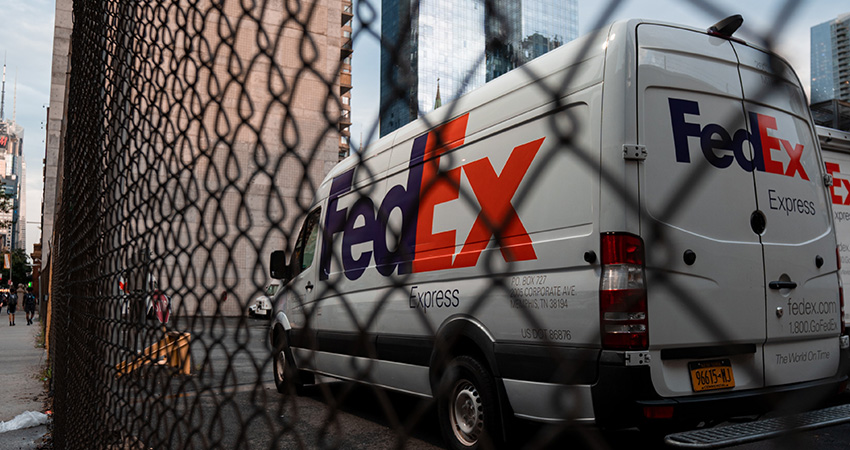FedEx is making a play with an earlier- and lower-than-expected 2024 GRI of 5.9% (credit: Spenser Sembrat on Unsplash)
FedEx, sensing an opportunity against its main rival, has posted a general rate increase for next year three weeks earlier than usual and lower than the current year’s figure, coming in at 5.9%, as UPS is dealing with a new union contract cost that the Teamsters estimates at $30 billion over five years.
Several analysts have predicted UPS would come in with a rate above the 6.9% GRI that both carriers set a year ago for 2023 to help offset the increased labor cost. However, competitive pressure from FedEx’ move may cause a rethinking of that. Both companies are generally in lockstep on GRI rates but there has been some divergence.
“We were expecting UPS to follow last year at 6.9% and raise surcharges and fees double digits again,” said Todd Benge, SVP of parcel consulting at Transportation Insight, adding margin pressure from the labor cost is a major driver. “Now that FedEx has thrown the gauntlet down at 5.9% UPS has to think about pivoting.”
With the FedEx rate out early, UPS may “slow roll their announcement” until just before Thanksgiving, Benge speculated.
On its rate page, FedEx said the standard list rate for its Express package and freight service, and for FedEx Ground, will go up an average of 5.9% starting Jan. 1. FedEx Freight rates will also increase 5.9%. Rates for FedEx Freight 1000 and 501 services will increase by 6.9%.
Details on 2024 rates and surcharges will be published Sept. 7, the company said.
Industry analysts agreed that FedEx’s GRI announcement is an effort to retain business it won during the threat of a Teamsters strike against UPS, which the brown carrier vows to win back, and gain more even ground. UPS said it lost an average of 1 million parcels a day to competitors as a new Teamsters contract hung in the balance.
Stephanie Martin, managing partner of Navigo Consulting Group, said while the historically early announcement from FedEx was a surprise, it clearly indicated positioning vs. UPS post settlement.
“For the FedEx Freight portion, this pricing could reflect industry changes since Yellow Freight’s recent closure,” Martin said.
Chris Cashin, a supply chain consultant with Parcel Consulting, said a lower FedEx GRI made sense given market softening and increased competition from Amazon Logistics reentering the last-mile space.
While the lower figure undercuts expectations of a higher rate from UPS, Cashin called FedEx’ move “sleight of hand.”
“FedEx has substantially raised its demand surcharges, accessorials and handling fees while pointing to the lower base rate GRI as being ‘competitive,’” he said. “Overall, there may not be much difference in 2024 net rates for either UPS or FedEx.”
In its efforts to win back business, Cashin said, shippers are reporting UPS rate offers lower than they’ve been in 30 years. “The tradeoff for UPS customers has been lower rates now, in exchange for longer contract terms, and higher volume commitments,” Cashin said. “If customers don’t negotiate GRI limits, they could be impacted by a larger GRI in January.”
Based on its aggressive rollout of automation and expansion of RFID in its facilities, and the projected efficiency-based savings, UPS “may surprise the market” with a lower GRI for 2024, he said.

